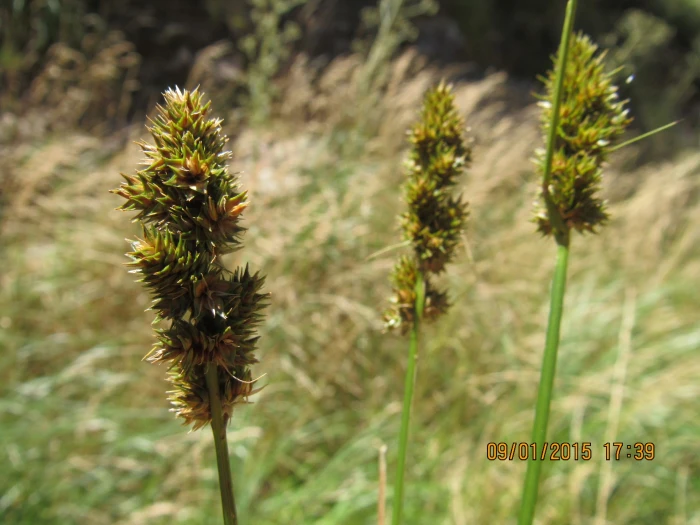Muhlenberg’s Sedge
(Carex brongniartii)
Muhlenberg’s Sedge (Carex brongniartii)
/
/

© Santiago Martín-Bravo
CC BY 4.0
Image By:
© Santiago Martín-Bravo
Recorded By:
Copyright:
CC BY 4.0
Copyright Notice:
Photo by: © Santiago Martín-Bravo | License Type: CC BY 4.0 | License URL: http://creativecommons.org/licenses/by/4.0/ | Uploader: martin-bravo | Publisher: iNaturalist |

















Estimated Native Range
Climate Requirements for Gatineau, Canada
| This Plant | Your Site | Plant Suitability for Your Location | ||
|---|---|---|---|---|
| • Precipitation | 12" - 74" | 37" | Aquatic | Aquatic |
| • High Temp. | 72°F - 90°F | 81°F | Your summer temperatures are normal for this plant. | Excellent |
| • Low Temp. | 30°F - 49°F | 3°F | Your winter temperatures may be too cold for this plant | Too cold |
This plant should grow well at your location with about N inches per year (Y minutes per month) of irrigation.
Summary
Carex brongniartii, commonly known as Muhlenberg’s Sedge, is a perennial herb native to open woodlands and grasslands in South America. It typically grows to a height of 1-3 feet (0.3-0.9 meters) and can spread to about 3 feet (0.9 meters) wide. This sedge forms dense clumps of narrow, arching green leaves, which add texture to garden compositions. It is not particularly known for its flowers, as they are small and not showy, but it does produce brownish spikelets that may add visual interest in the summer.
Muhlenberg’s Sedge is valued for its ability to form attractive ground cover and for its adaptability to a range of soil conditions, though it prefers moist, well-drained soils. It is often used in rain gardens, as a border plant, or for naturalizing areas. This sedge thrives in full sun to part shade and requires consistent moisture to look its best. It is relatively low maintenance, but it may need division every few years to rejuvenate and control its spread. While generally disease-free, it can suffer from rust or root rot in poorly drained soils.CC BY-SA 4.0
Muhlenberg’s Sedge is valued for its ability to form attractive ground cover and for its adaptability to a range of soil conditions, though it prefers moist, well-drained soils. It is often used in rain gardens, as a border plant, or for naturalizing areas. This sedge thrives in full sun to part shade and requires consistent moisture to look its best. It is relatively low maintenance, but it may need division every few years to rejuvenate and control its spread. While generally disease-free, it can suffer from rust or root rot in poorly drained soils.CC BY-SA 4.0
Plant Description
- Plant Type: Grass
- Height: 1-3 feet
- Width: 1-3 feet
- Growth Rate: Moderate
- Flower Color: N/A
- Flowering Season: Spring, Summer
- Leaf Retention: Semi-deciduous
Growth Requirements
- Sun: Full Sun, Part Shade
- Water: Medium
- Drainage: Medium
Common Uses
Bird Garden, Deer Resistant, Drought Tolerant, Erosion Control, Low Maintenance
Natural Habitat
Native to open woodlands and grasslands
Other Names
Common Names:
Scientific Names: Carex brongniartii, Carex hypoxanthos
GBIF Accepted Name: Carex brongniartii Kunth